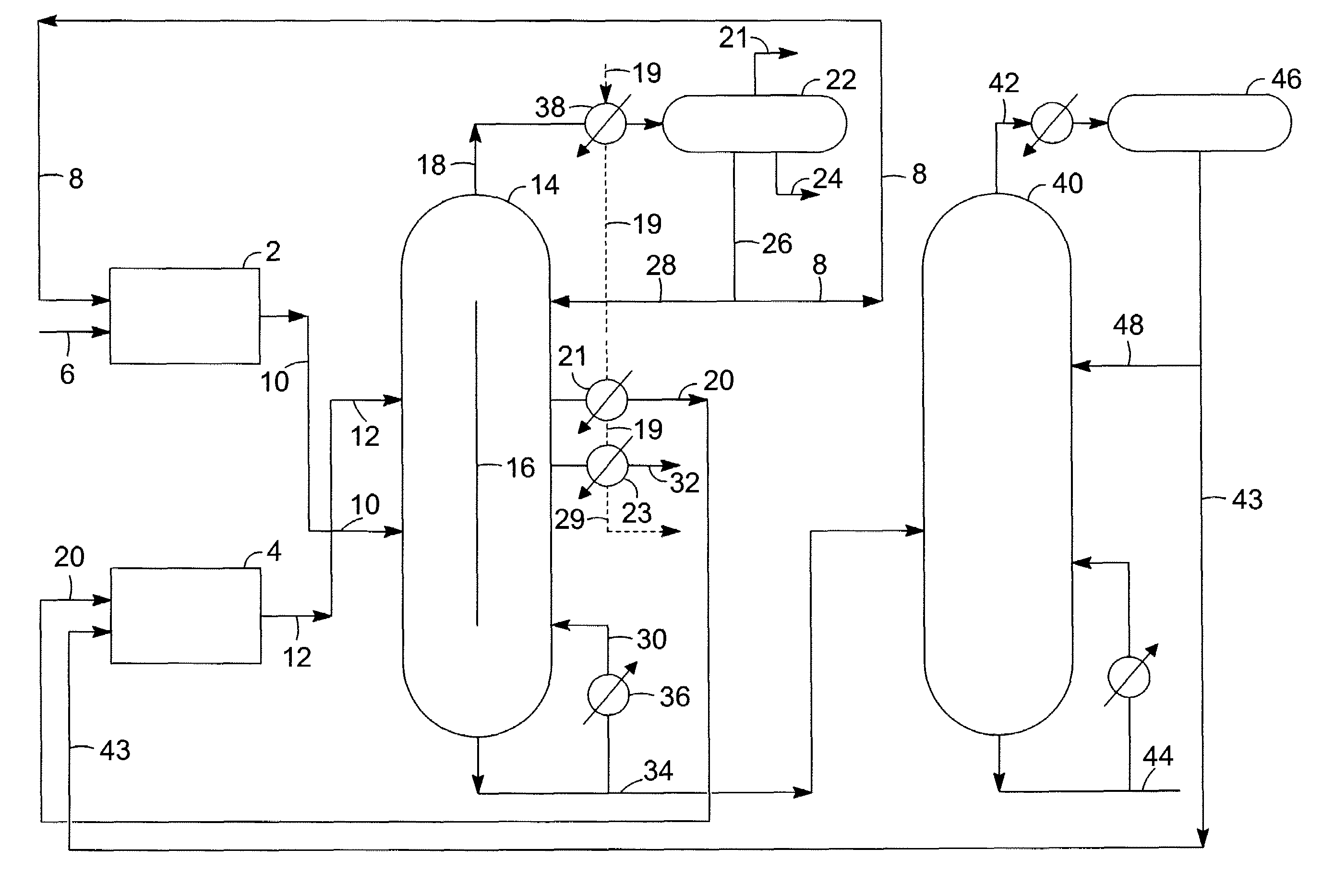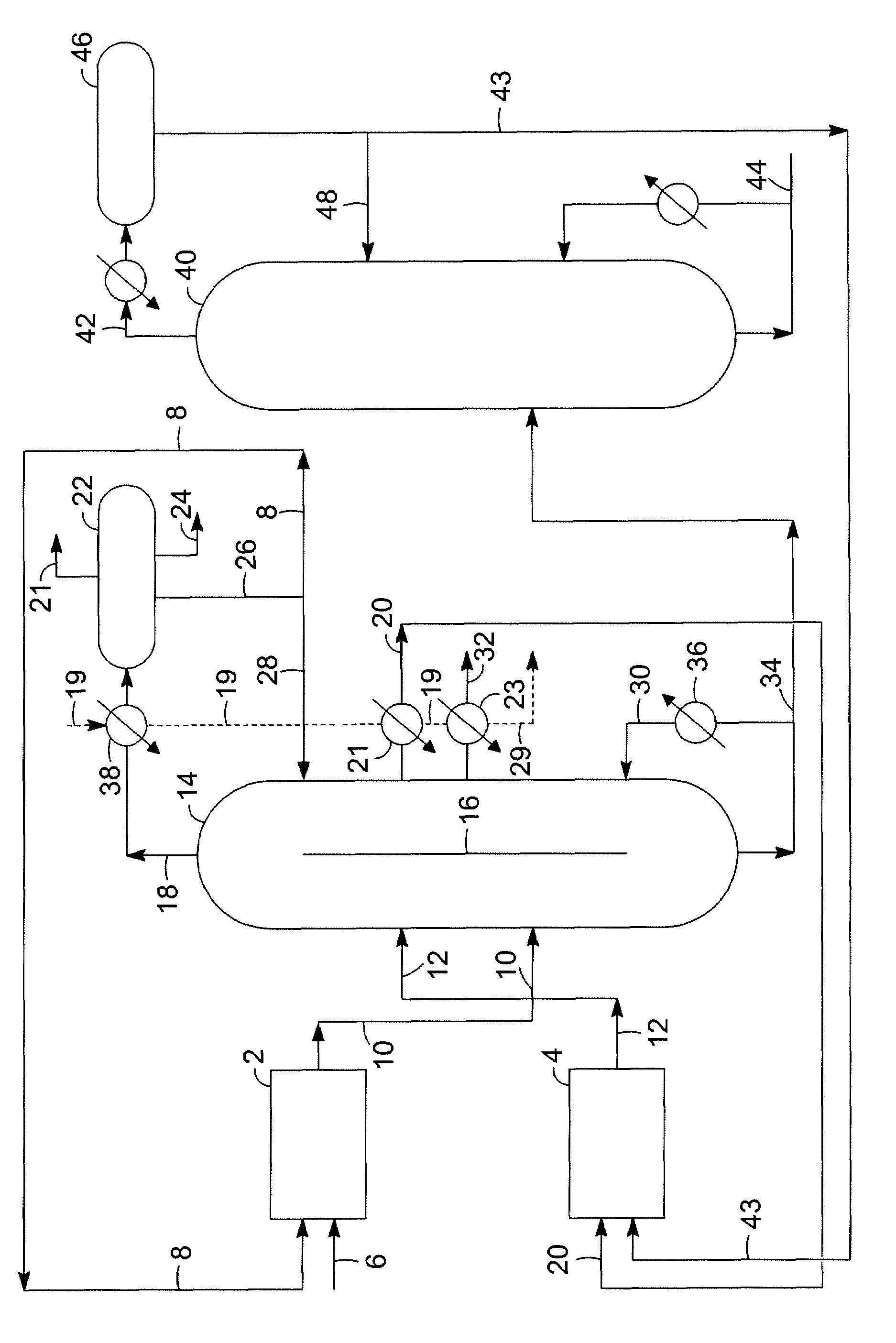Process for producing cumene
a technology of cumene and process, applied in the direction of vacuum distillation separation, separation process, organic chemistry, etc., can solve the problems of cumene yield loss based on propylene reactant charge, problems in some commercial processes,
- Summary
- Abstract
- Description
- Claims
- Application Information
AI Technical Summary
Benefits of technology
Problems solved by technology
Method used
Image
Examples
Embodiment Construction
[0012]Referring to the FIGURE, the process of the invention requires two reactors, an alkylation reactor 2, or alkylator, and a transalkylation reactor 4, or transalkylator. Propylene and benzene feedstocks 6 and an excess of benzene 8 are introduced to alkylator 2. A typical propylene feedstock may be an almost pure polymer grade material or can contain significant amounts of propane, as typically found in refinery-grade propylene. A typical benzene feedstock may contain benzene (99.9 wt.-% min.) and toluene (0.05 wt.-% min). Alkylation reactors may be operated in the vapor phase, liquid-phase or mixed-phase. It is preferred to operate the alkylation reactor in the liquid phase. At the lower temperatures of the liquid phase operation, xylene impurities are not produced and a cumene product of superior quality is produced. In one embodiment, the temperature of the alkylation reactor is selected from the range of 100° C. to 310° C. (212 to 590° F.) and the pressure is selected from t...
PUM
| Property | Measurement | Unit |
|---|---|---|
| temperature | aaaaa | aaaaa |
| pressure | aaaaa | aaaaa |
| temperature | aaaaa | aaaaa |
Abstract
Description
Claims
Application Information
 Login to View More
Login to View More - R&D
- Intellectual Property
- Life Sciences
- Materials
- Tech Scout
- Unparalleled Data Quality
- Higher Quality Content
- 60% Fewer Hallucinations
Browse by: Latest US Patents, China's latest patents, Technical Efficacy Thesaurus, Application Domain, Technology Topic, Popular Technical Reports.
© 2025 PatSnap. All rights reserved.Legal|Privacy policy|Modern Slavery Act Transparency Statement|Sitemap|About US| Contact US: help@patsnap.com


